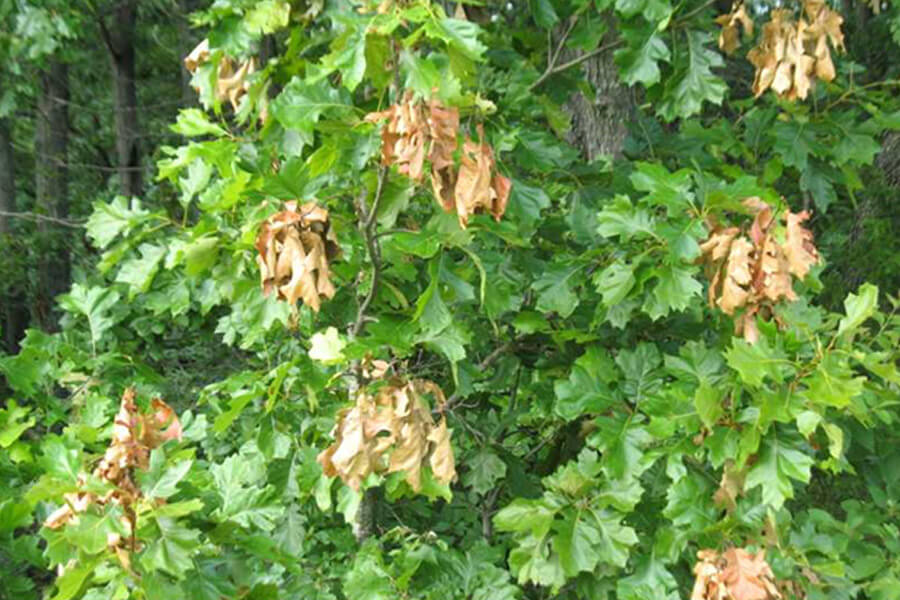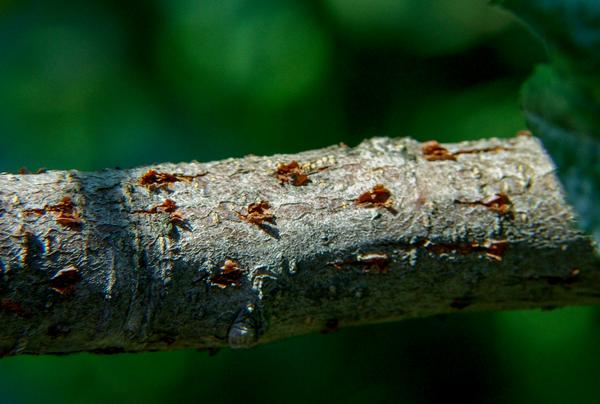At our home in Missouri, every 13 years, we have a brood of cicadas called Brood XIX (Brood 19). These cicadas are periodical cicadas.
That means that they come back every 13 or 17 years. The other type of cicada is a annual cicada. These come back every year and look a lot different. Annual cicadas also can grow half an inch larger than a periodical.
With the cicadas, you might also notice that some of the leaves on your tree are dying, that is because they do something called tree flagging.
Tree Flagging
To do tree flagging, they use a sharp appendage on their abdomen called a ovipositor to lay their eggs inside a tree's branches causing small markings on the branch, and causing it to wilt. 10-25 eggs can be in each ovipositor mark. Each female cicada can lay anywhere from 400-600 eggs in their whole lifetime.
Periodical Cicada Oviposition
If you don't like the creepy crawlies, something you can do to help is spread vinegar around your yard. It may seem weird, but it helps a lot. It doesn't kill the cicadas, and is safe for birds and other wildlife. It would especially help if you have elm, chestnut, ash, maple, oak, or willow trees. Even so, cicadas are completely harmless

















